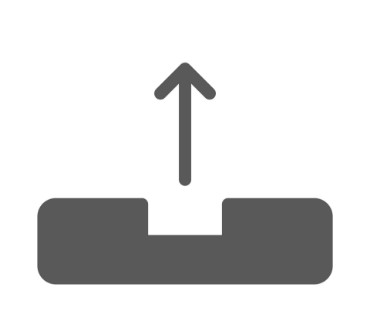Cookies help us deliver our services. By using our services, you agree to our use of cookies.
Cables & Adapters
Cables & Adapters
OEM IO Adapt.Slim DVD IDE to IDE 40pin
ADA0001
this small converter board is an ideal solution for rack mount PCs, blade servers, Mini-ITX systems, or small equipment requiring to connect a slim SATA optical drive to 44-pin IDE interface.
€3.00 incl VAT excluding shipping
OEM Mini USB 5Pin Male to Dupont 0.5m
AUS0001
Applications: Connector 1: Mini USB 5pin male Connector 2: Motherboard 5pin female data transfer rates of up to 480 Mbps Color: black
€12.80 incl VAT excluding shipping
OEM Motherboard RGB SYNC Splitter 12V 4Pin RGB Transfer Extension Cable
APO0050
€10.00 incl VAT excluding shipping
OEM Sleeved 27cm Cooler Cable SATA to 1Pin Fan with splitter Power Cable
APO0083
€4.80 incl VAT excluding shipping
PC Case Switches Power/Reset with LED
APO0035
Works with most cases with front panel button. Replace your old or broken connector switch. Just connect the cable onto the motherboard, and you can switch on power or reset the motherboard. You can press the button with your bare finger without installing onto the PC Case
€2.00 incl VAT excluding shipping
Phanteks 4 pin RGB LED cable
APO0004
Phanteks’ RGB LED Adapter is a simple, frustration-free solution to the upcoming RGB integrated motherboards that includes the RGB headers. This adapter will allow you to synchronize and control the lighting of your LED strip and Phanteks cases with the motherboards’ lighting software.
€1.50 incl VAT excluding shipping
Phanteks HDD bracker 1x3.5
AMS0003
The Phanteks PH-HDDKT2 allows installation of an additional 3.5" or 2.5" drive in select Enthoo Series cases
€3.00 incl VAT excluding shipping
PowerWalker UK 16A Cable C19 (180cm) Art. No. 91010030
APO0024
PowerWalker UK Input Power Cable C19 (180cm)
€12.00 incl VAT excluding shipping
TapeCom C13>C14 Power Extension 2m JL-38C/JL-39C
APO0020
Computer power extension cord connects 2 devices with C13/C14 power connectors or extends your existing power connection
€2.60 incl VAT excluding shipping
TapeCom UK 3-Pin > C13 Power Cord 1.8m JL-49A/JL-38C
APO0019
Perfect for connection between PCs, displays, printers or other devices with IEC cold device ports
€3.00 incl VAT excluding shipping
TapeCom UK 3-pin > C5 (clover) Power cord 1.8m JL-49A/JL-47
APO0038
UK 3 pin plug to C5 Cloverleaf mains lead 3 x 0.75mm cores – 5 amp fuse. Most commonly used as a laptop lead.
€3.20 incl VAT excluding shipping
TapeCom UK 3-Pin > C7 Power Cord 1.8m
APO0041
A C8B inlet type (commonly known as the figure of 8) is defined by the standard for use by dual-voltage appliances; it has three pins and can hold a C7 connector in either of two positions, allowing the user to select voltage by choosing the position the connector is inserted
€2.60 incl VAT excluding shipping
TapeCom USB Power Strip TP-FA4U6K 2M, 4-Port USB and 6 Sockets with surge
APO0031
Ideal for Home desks, or office, in a sleek, minimalistic design
€19.90 incl VAT excluding shipping
TapeCom UTP CAT 5E Patch BC 24AWG 10m
ANW0041
Cat 5e cables operate on the same 100 MHz frequency as Cat 5 and have the same maximum length of 100 meters before requiring a router or powered signal booster. The primary difference between the two standards is that Cat 5 is only rated for 100 Mbps networks, while Cat 5e supports 1,000 Mbps networks.
€3.69 incl VAT excluding shipping
TapeCom UTP CAT 5E Patch BC 24AWG 15m
ANW0042
Cat 5e cables operate on the same 100 MHz frequency as Cat 5 and have the same maximum length of 100 meters before requiring a router or powered signal booster. The primary difference between the two standards is that Cat 5 is only rated for 100 Mbps networks, while Cat 5e supports 1,000 Mbps networks.
€7.42 incl VAT excluding shipping
TapeCom UTP CAT 5E Patch BC 24AWG 2m
ANW0038
Cat 5e cables operate on the same 100 MHz frequency as Cat 5 and have the same maximum length of 100 meters before requiring a router or powered signal booster. The primary difference between the two standards is that Cat 5 is only rated for 100 Mbps networks, while Cat 5e supports 1,000 Mbps networks.
€1.16 incl VAT excluding shipping
TapeCom UTP CAT 5E Patch CCA 24AWG Grey 10m
ANW0133
Cat 5e cables operate on the same 100 MHz frequency as Cat 5 and have the same maximum length of 100 meters before requiring a router or powered signal booster. The primary difference between the two standards is that Cat 5 is only rated for 100 Mbps networks, while Cat 5e supports 1,000 Mbps networks.
€1.57 incl VAT excluding shipping





























